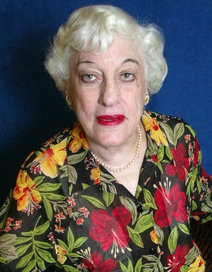Doris Hering Credit Chester Higgins Jr. The New York Times
Doris Hering, a critic who surveyed the dance world for decades, beginning in the 1940s, and was later the founding executive director of a national organization that promoted regional dance throughout the United States, died on Oct. 15 in the Bronx. She was 94.
Her death was confirmed by Nancy Mason Hauser, a friend.
As a critic for Dance magazine and other publications, Ms. Hering charted the rise of the New York City Ballet; the American debuts of troupes like the Sadler’s Wells Ballet from Britain and the Bolshoi and Kirov Ballets from the Soviet Union; the flourishing of American modern dance; and the experiments of Merce Cunningham, Alwin Nikolais and the iconoclastic Judson Dance Theater.
She began reviewing for Dance in the late 1940s and, from 1951 to 1971, was the magazine’s associate editor and principal critic. Early on, immersed in the New York dance scene, she underwent a change of outlook in 1957, when she was given an out-of-town assignment.
Asked to cover the second Southeastern Regional Ballet Festival in Birmingham, Ala., she went, she later admitted, with a touch of Manhattan snobbery, skeptical that communities outside a few large metropolitan centers could produce high-quality dance. What she saw amazed her, she said, and she began to include more regional news and reviews in the magazine.
Her exposure to regional dance occurred as it was becoming a movement nationwide. Besides the one in the Southeast, there were the Northeast, Southwest, Pacific Western and MidStates regional ballet associations. In 1972, to coordinate their activities, the groups formed the National Association for Regional Ballet, later renamed Regional Dance America, and Ms. Hering was named executive director.
She held the post until 1987, when she returned to freelance criticism for Dance and other publications. She continued writing into her 90s.
No immediate family members survive.
Ms. Hering was born in Brooklyn on April 11, 1920, the daughter of Harry Hering, an artist and engraver, and the former Anna Schwenk. Although Ms. Hering studied music and dance as a child, she majored in Romance languages at Hunter College in New York, hoping to teach French.
Unable to find a teaching job, however, she went to a secretarial school and worked for an advertising agency before finding her way into dance journalism. In 1985 she received a master’s degree in Romance languages from Fordham University.
Ms. Hering’s books include “25 Years of American Dance,” which she edited, and “Giselle & Albrecht: American Ballet Theater’s Romantic Lovers.” At her death, she had been working on two more: a biographical study of the pioneers of American regional dance and an anthology of her own criticism.
By JACK ANDERSONOCT. 26, 2014




